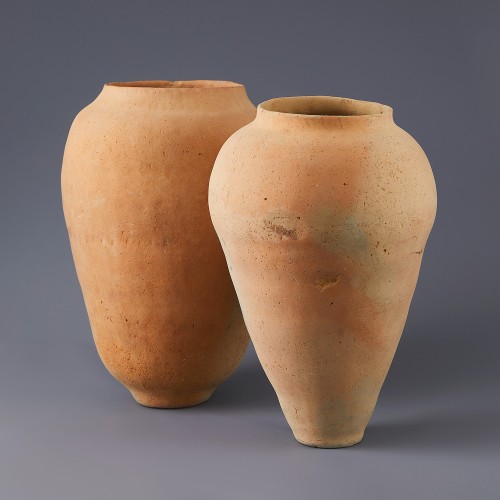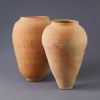본문
신석기 시대의 토기호(土器壺)는 목이 달린 항아리 형태로 주로 식량 저장과 조리에 사용되었습니다.
이 시기의 토기는 정착 생활, 원시 농경의 발달과 함께 본격 등장하였으며, 손으로 진흙을 빚어 낮은 온도에서 구워내는 방식으로 제작되었습니다. 형태의 다양함은 점토의 가소성과 제작 기술의 발달을 보여주며, 이는 지역별 생활 양식과 문화적 차이를 반영하는 자료로 활용됩니다.
이 유물은 하단으로 갈수록 몸체가 좁아지며 짧은 목을 가지고 있습니다. 구조상 액체나 곡물을 저장하고 운반하기에 적합한 형태로 당시 생활상을 엿볼 수 있습니다. 또한 하단부가 좁은 형태로 땅에 묻기에 용이하였을 것으로 추측되며, 하단부가 좁아지는 형태로 불이 닿는 면적이 고루 퍼져 끓이는 용도로 사용하기에도 적합해 보입니다.
형태의 다양성과 기능적 분화는 토기라는 유물의 재질적 특징과 당대 기술 발달 과정, 지역적 특징 등 다양한 문화적 양상을 살필 수 있게 도와줍니다. 즉, 당대 생활 도구이자 인류 문화 발전의 한 단면을 보여주는 중요한 유물입니다.
━━━━━
新石器时代的陶壶是一种带颈的壶形陶器,主要用于储藏食物和烹饪。
这一时期的陶器随着定居生活和原始农业的发展而正式出现,通常以手工捏制陶土并在低温下烧制而成。陶器形态多样,展现了黏土的可塑性和制造技术的发展,同时也反映出各地区生活方式和文化的差异,可作为研究资料使用。
此器物下部逐渐收窄,颈部较短,结构上适于储存和搬运液体或谷物,展现出当时的生活面貌。下部狭窄的形状也便于埋入地下,同时,这种造型使壶底与火源的接触面积较广,也适合用于加热或煮沸。
陶器形态的多样性与功能的分化,反映了陶器材质的特性、当时的技术发展和地域文化的不同。这不仅是当时的重要生活工具,也是一窥人类文化发展过程的重要实物资料。
━━━━━
The eartehnware jar from the Neolithic period is a jar-shaped earthenware vessel with a neck, mainly used for food storage and cooking.
Such pottery emerged alongside settled life and primitive agriculture. It was made by hand-shaping clay and firing it at low temperatures. The diversity in form reflects the malleability of clay and advancements in crafting techniques, offering insights into regional lifestyles and cultural distinctions.
This particular artifact features a narrowing lower body and a short neck, making it well-suited for storing and transporting liquids or grains. Its tapered bottom likely allowed it to be partially buried for stability, and the shape also facilitated even heat distribution during cooking.
The diversity in form and functional specialization of these vessels reveal much about the material properties of early pottery, technological progress, and regional variation. In essence, such artifacts provide a glimpse into the daily lives of prehistoric people and mark an important chapter in human cultural development.

